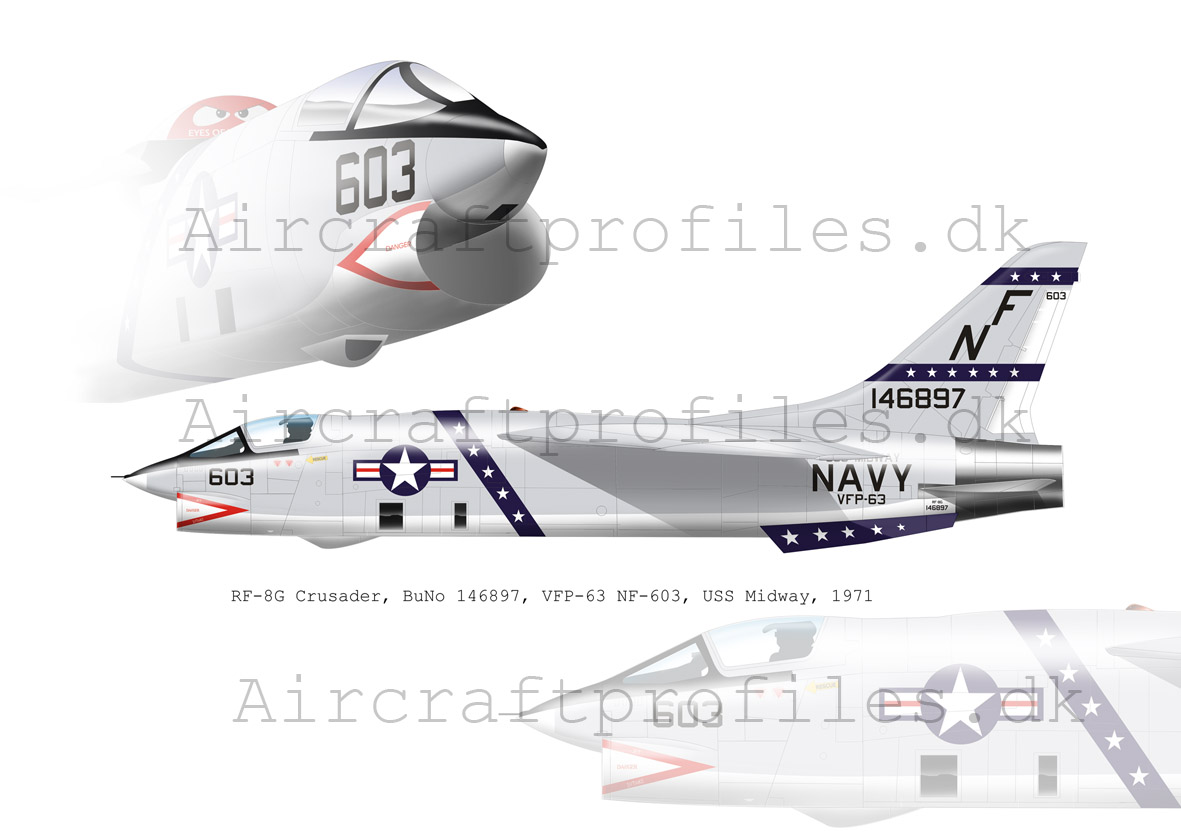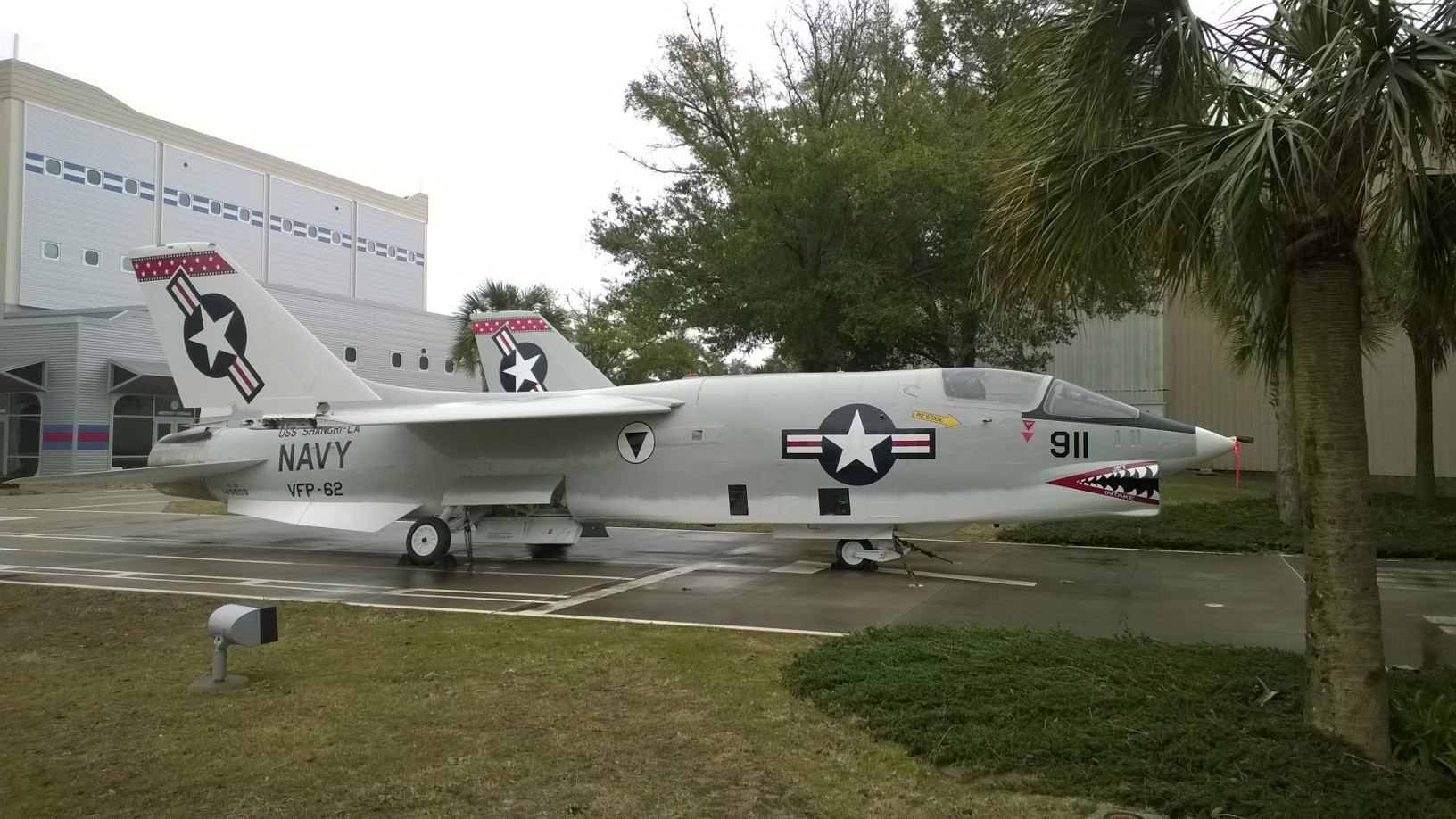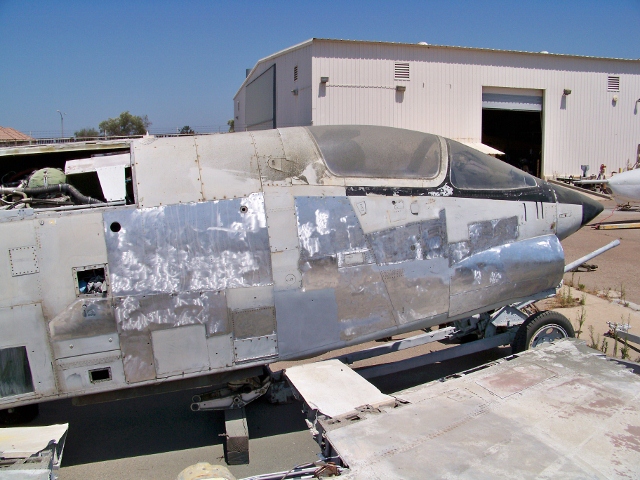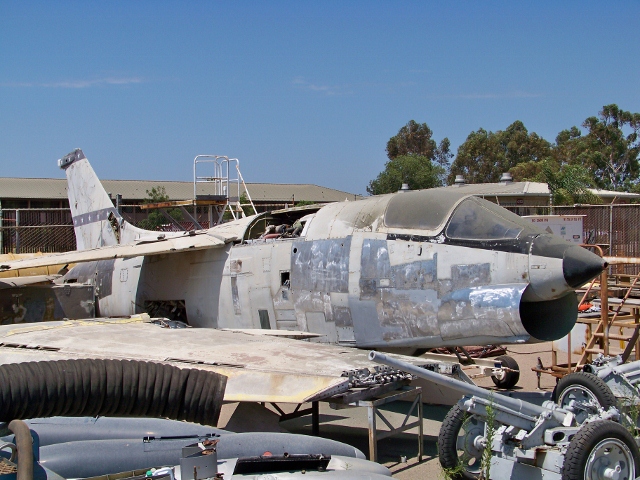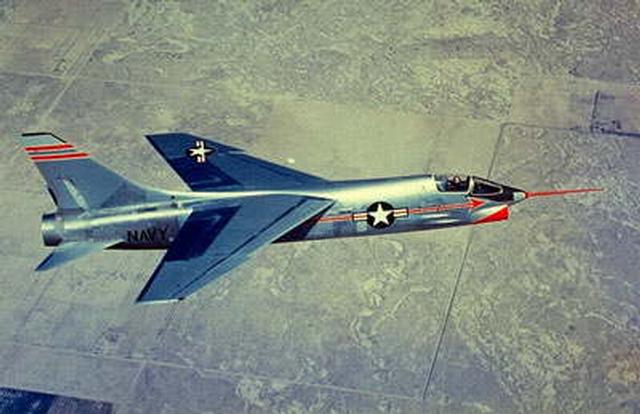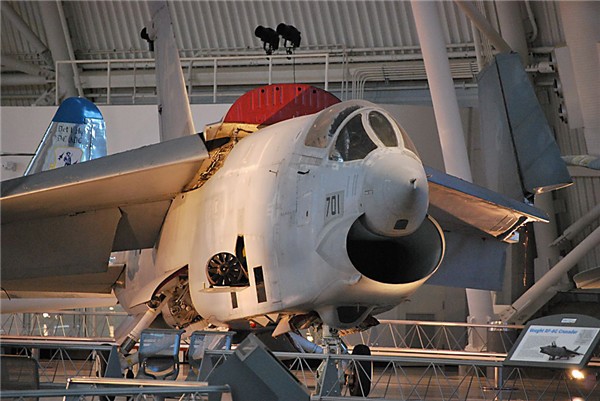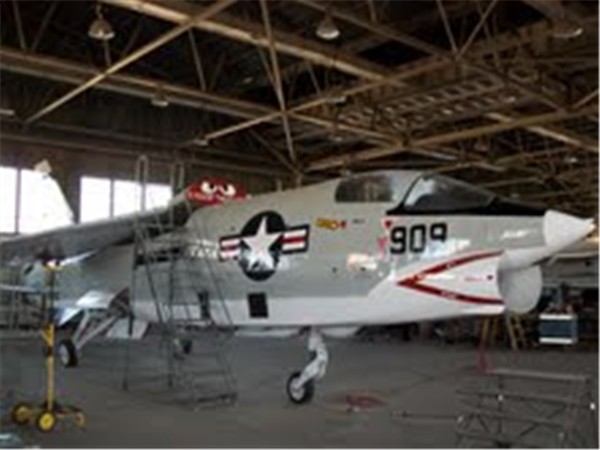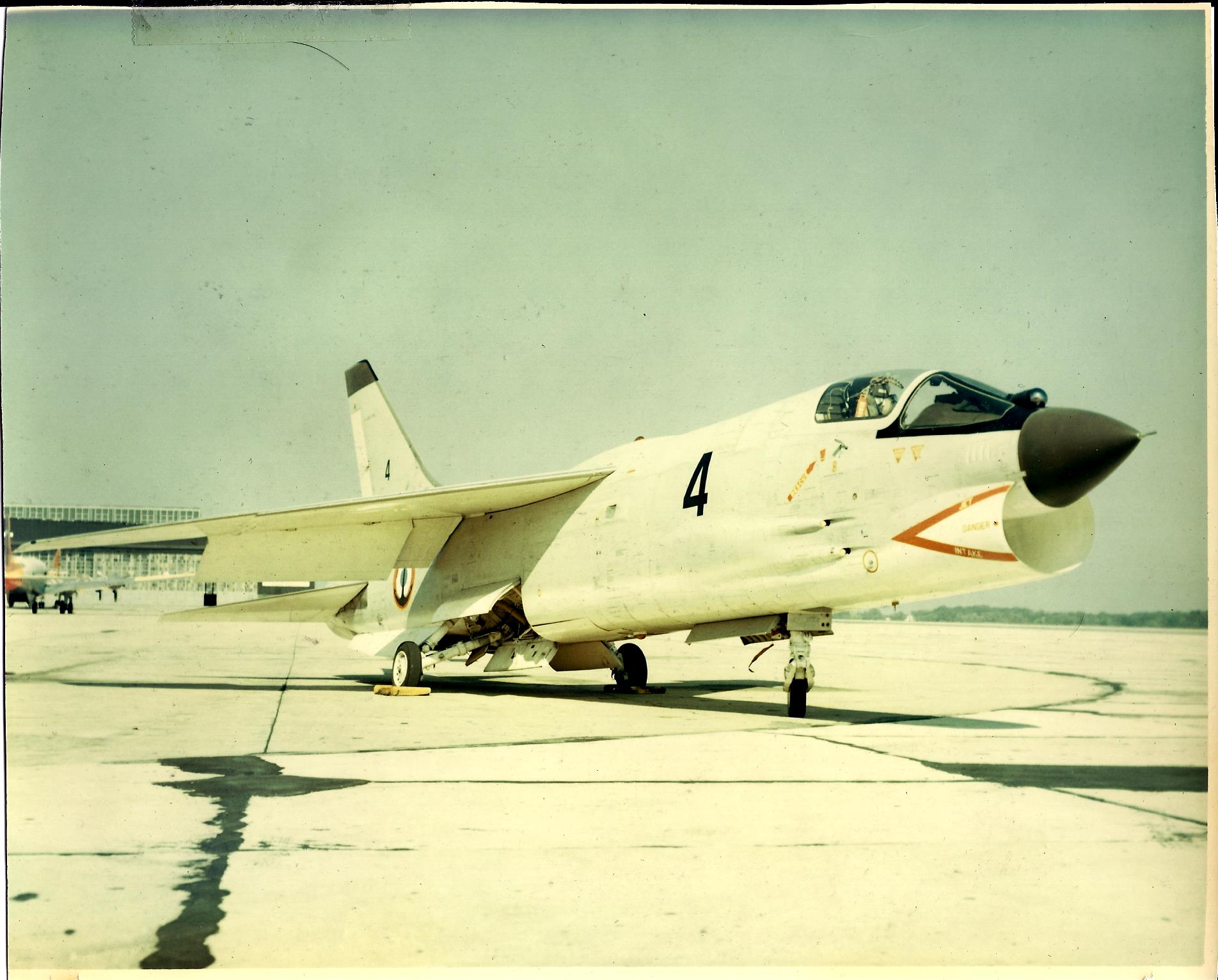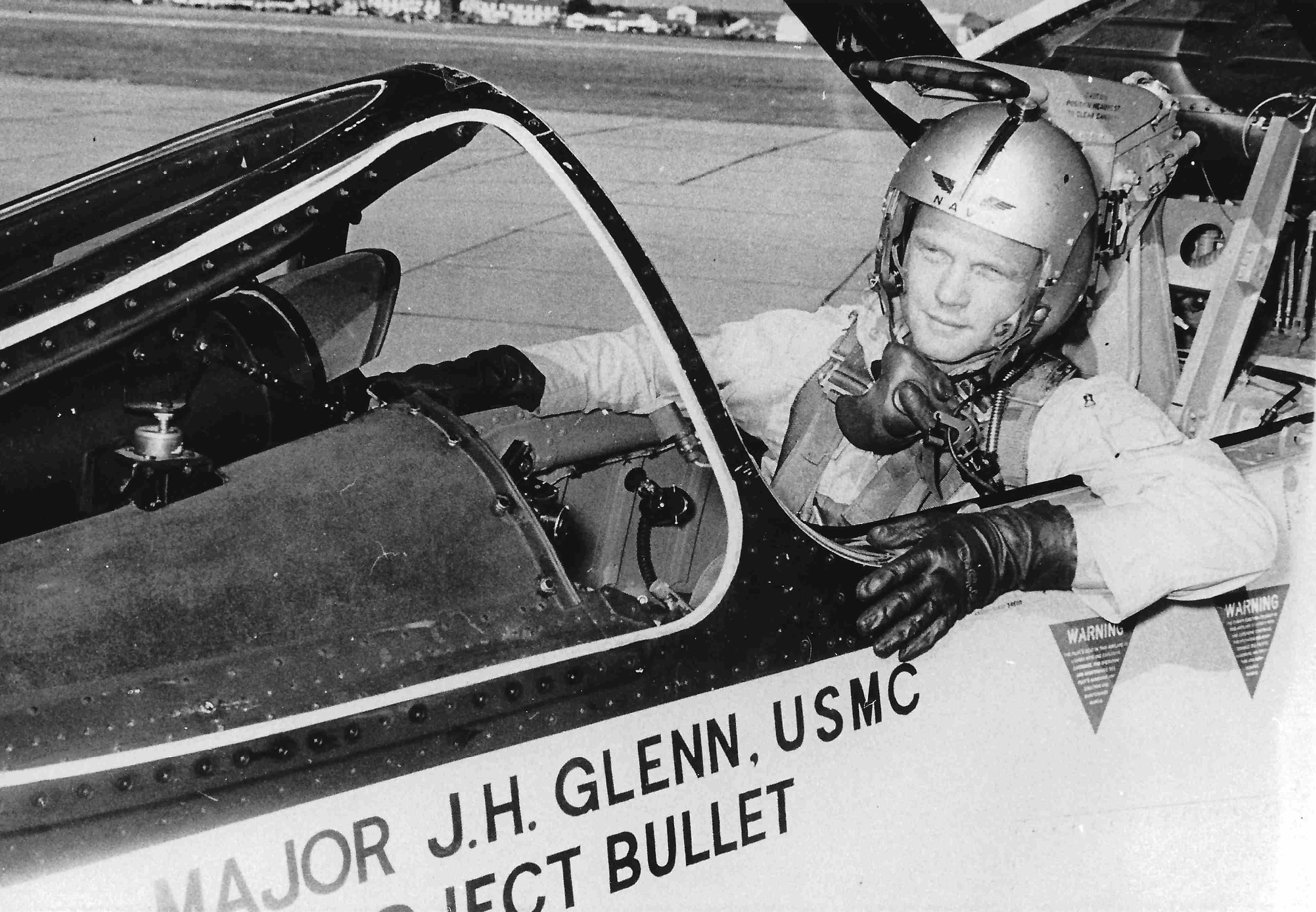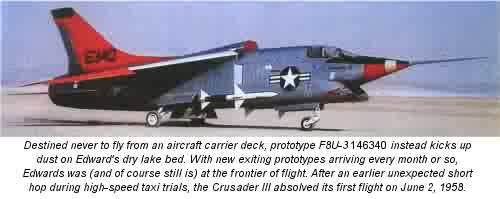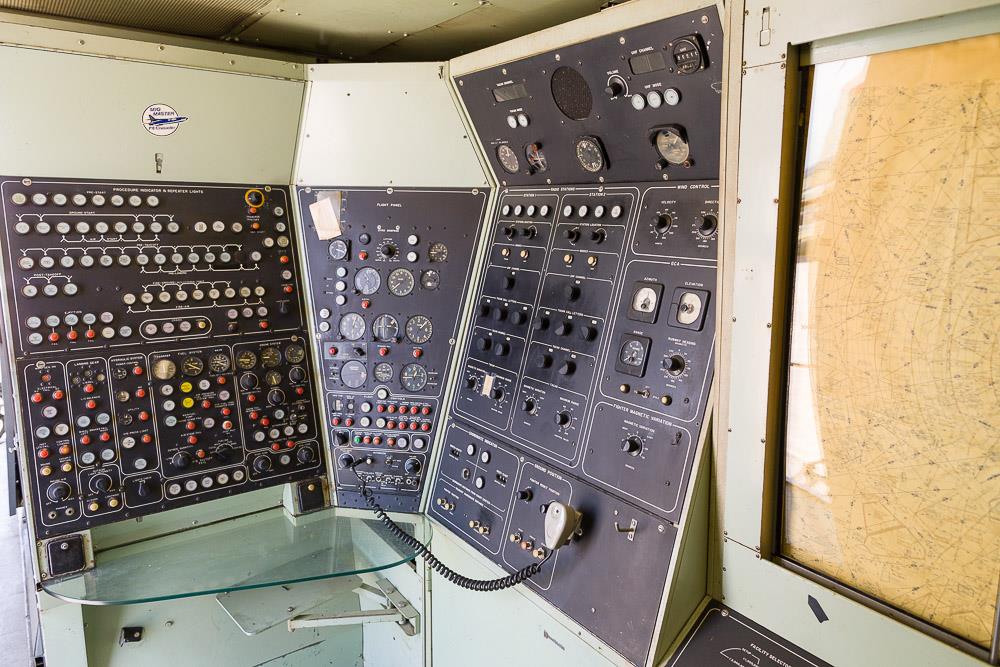RF-8 cockpit simulator. Note the photo viewfinder at top and camera control station in front of stick.
|
A closer look at the photo-Crusader's viewfinder used by the pilot to align his approach to the target. It could also input the altitude and speed to the camera controls.
|
Simulator spare electronic components including vacum tubes.
|
Simulator electronic modules. Remember, this was pre-solid state chips.
|




















